






After the past few years’ frenzied market, the market is hitting more of a buyer-seller equilibrium, with inventory levels moving up ever so slightly, buyers getting used to a new normal of interest rates, prices generally holding steady, and high-end home seekers expanding their reaches to more parts of the globe.
There are lots of changes happening, and the report explores them in depth—everything from the newest tech tools currently disrupting the real estate market, from artificial intelligence to smart-home technology, to pinpointing the parts of the world where tax incentives are increasingly enticing wealthy citizens.
Luxury Outlook 2024 also looks at the growing importance of sustainability and climate resilience to home builders and buyers, how hybrid work has shifted the world’s real estate needs, and how provenance can help homes sell.
This is a difficult time when it comes to geopolitical challenges, with several conflicts raging around the world at once. That makes it difficult to predict what the future will bring, and whether an intensification of conflict could affect financial markets.
For now, there continues to be economic uncertainty into 2024, despite some sporadic positive news. In the U.S., for one, economic growth accelerated in the fourth quarter of 2023, according to the Commerce Department.
While many experts are torn about the effects the conflicts are likely to have from a financial perspective, many market watchers predict an overall positive 2024 for the real estate market. As Sotheby’s International Realty CEO Philip A. White Jr. points out in his interview, Freddie Mac is forecasting prices rising by 0.8% between August 2023 and August 2024, followed by another 0.9% gain in the following 12 months, pointing to “tremendous” demand for houses relative to supply, continuing “to keep upward pressure on prices.”
For now, at least, most of the worries about the real estate market stalling due to rising interest rates haven’t come to fruition, with demand strong, as people move both because they’re going through major life events—such as new children and new jobs—or simply because they want to upgrade their homes and, with it, their lifestyle.
Speaking of the lifestyle factor, as always, we explore the high-end purchases people are making outside the real estate realm, including art, collectibles, and more.
Luxury buyers and sellers want to spend wisely, and staying well-informed is just the way to do it.
Read the Luxury Outlook 2024 by clicking here.
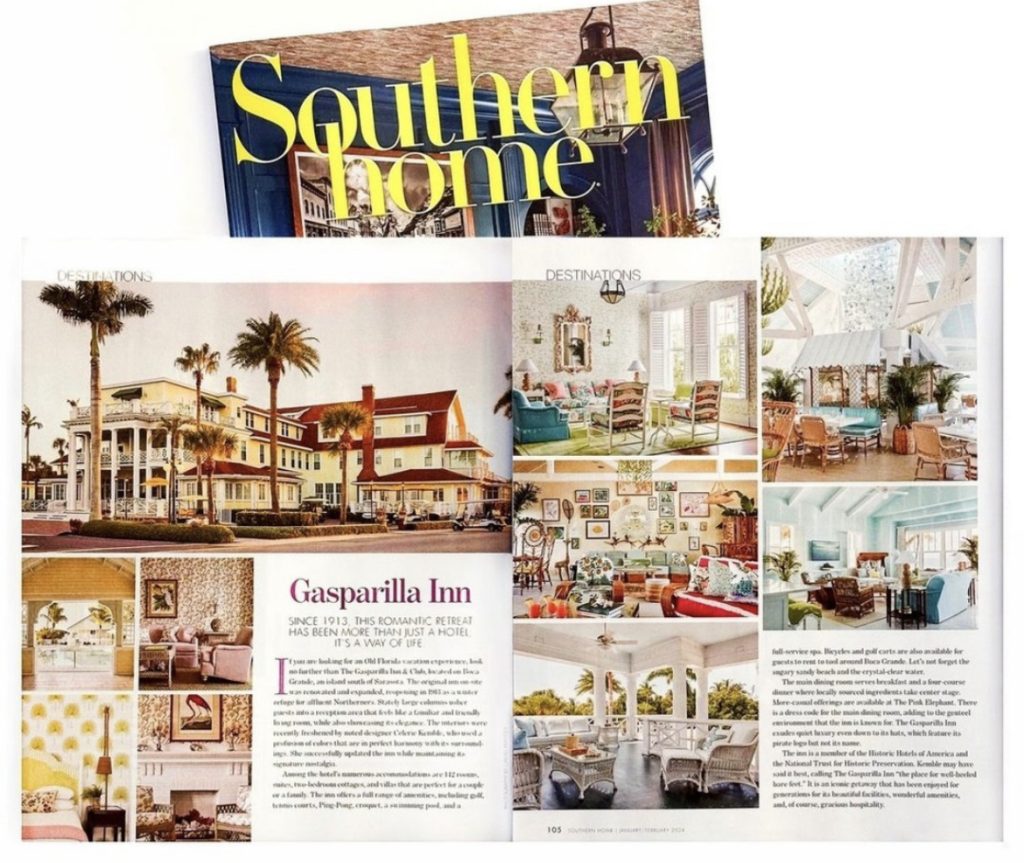
The Gasparilla Inn & Club is the perfect destination for those looking for a sunny respite with an Old Florida feeling and updated and inviting interiors by noted designer Celerie Kemble.
The profile appears in the Jan/Feb 2024 edition of Southern Home magazine.
Read more here.

The Gasparilla Inn was featured in the Fall Winter edition of Midwest Living Magazine.
In the article, “Take a Winter Jaunt Down South to These 8 Beach Resorts,” the Inn was featured as a top destination for snowbirds looking to escape the cold of winter.

From rooms with beach facing balconies to private cottages and sumptuous breakfasts, the Inn offers the ultimate resort experience, modern amenities and a dash of Old Florida decor that is not to be missed.
Read the entire article from Midwest Living by clicking here.

There are plenty of Florida postcard discoveries, but non feel quite as delightful as Gasparilla Island.

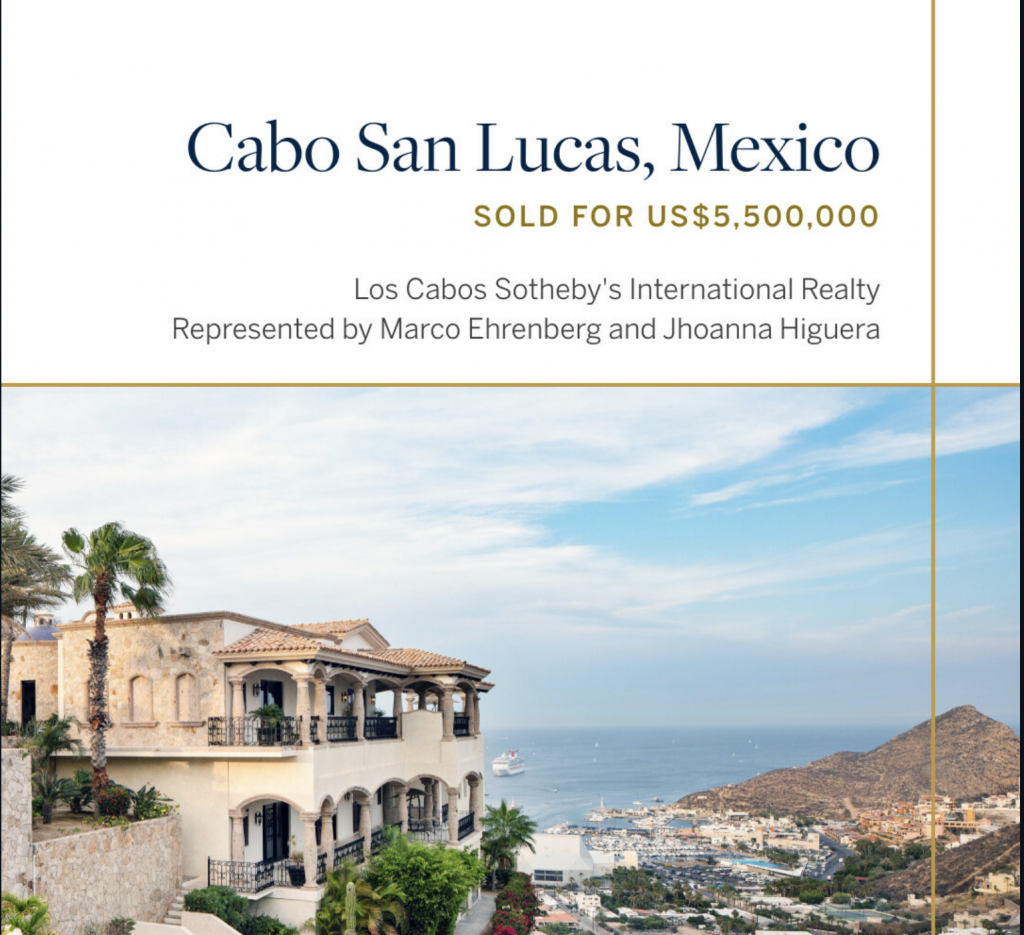
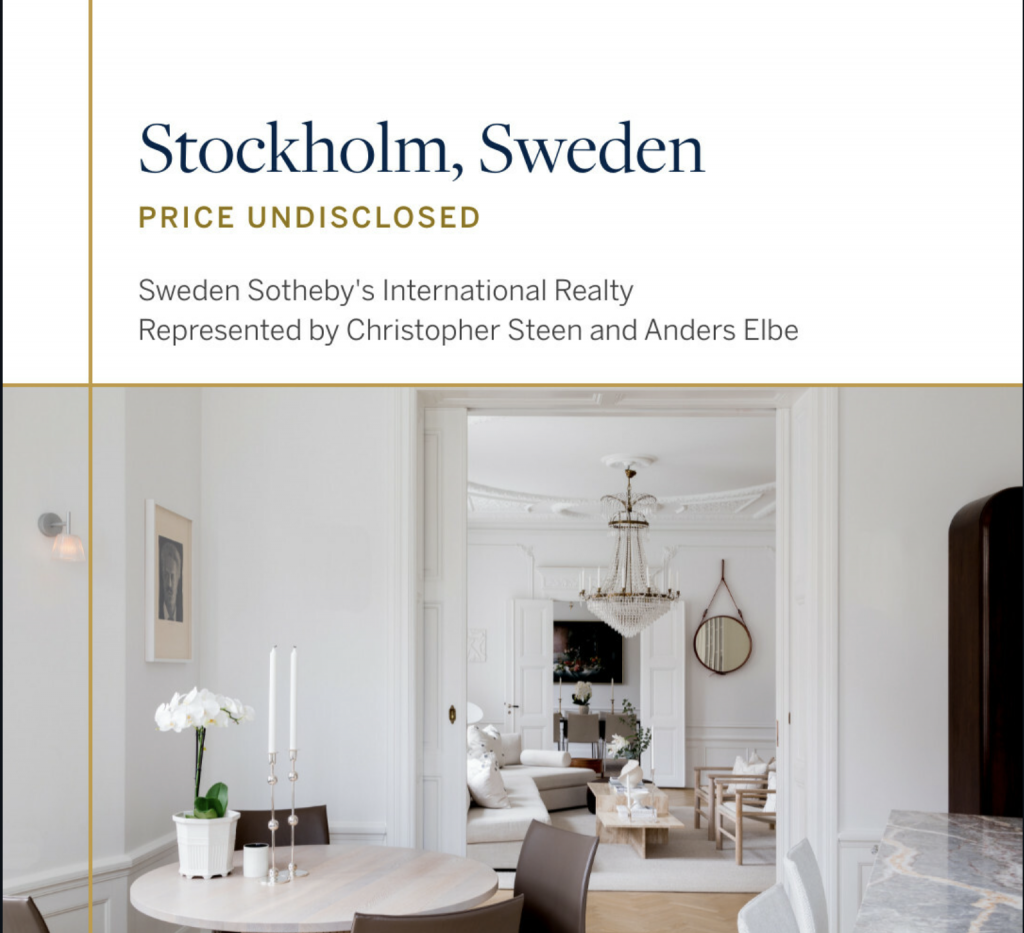
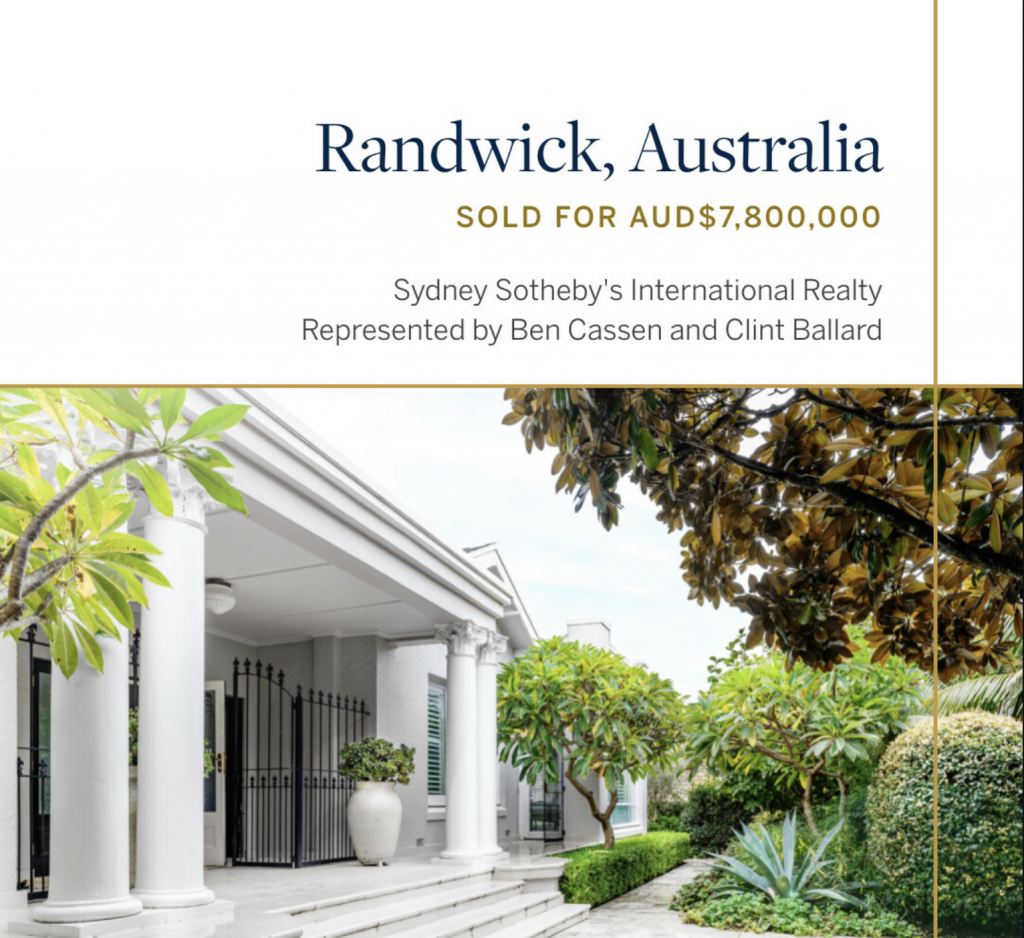
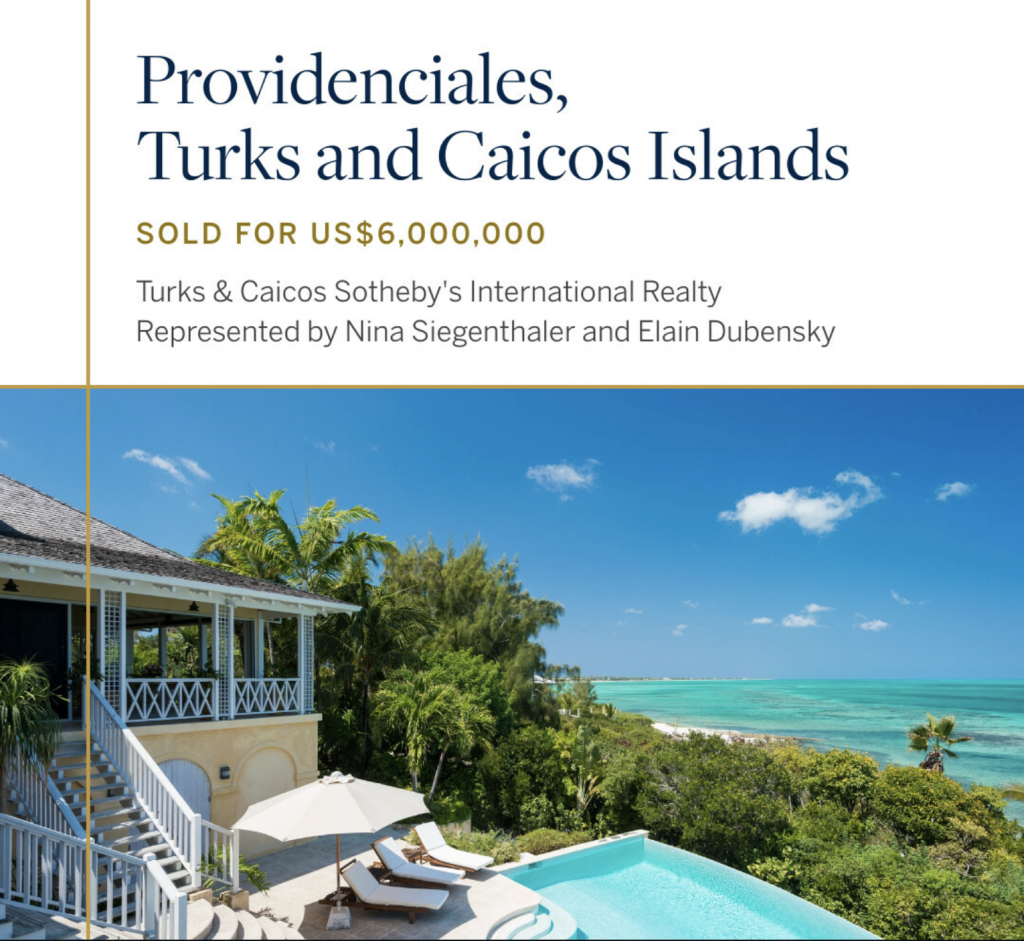


Old Florida meets laid-back island living in elegant Boca Grande.
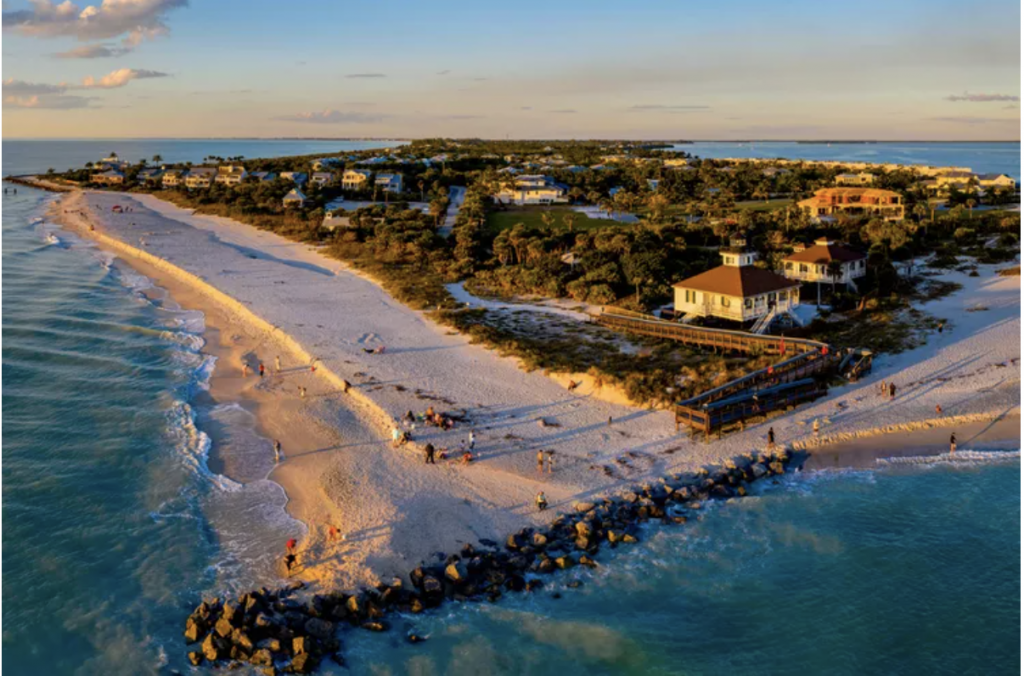
While the state of Florida welcomes nearly 140 million visitors each year, only a small portion of them make their way to serene Gasparilla Island and its main town, Boca Grande, an upscale yet down-to-earth community on the Gulf of Mexico that’s just the right amount of sleepy (except when it comes to its role as “Tarpon Capital of the World”).

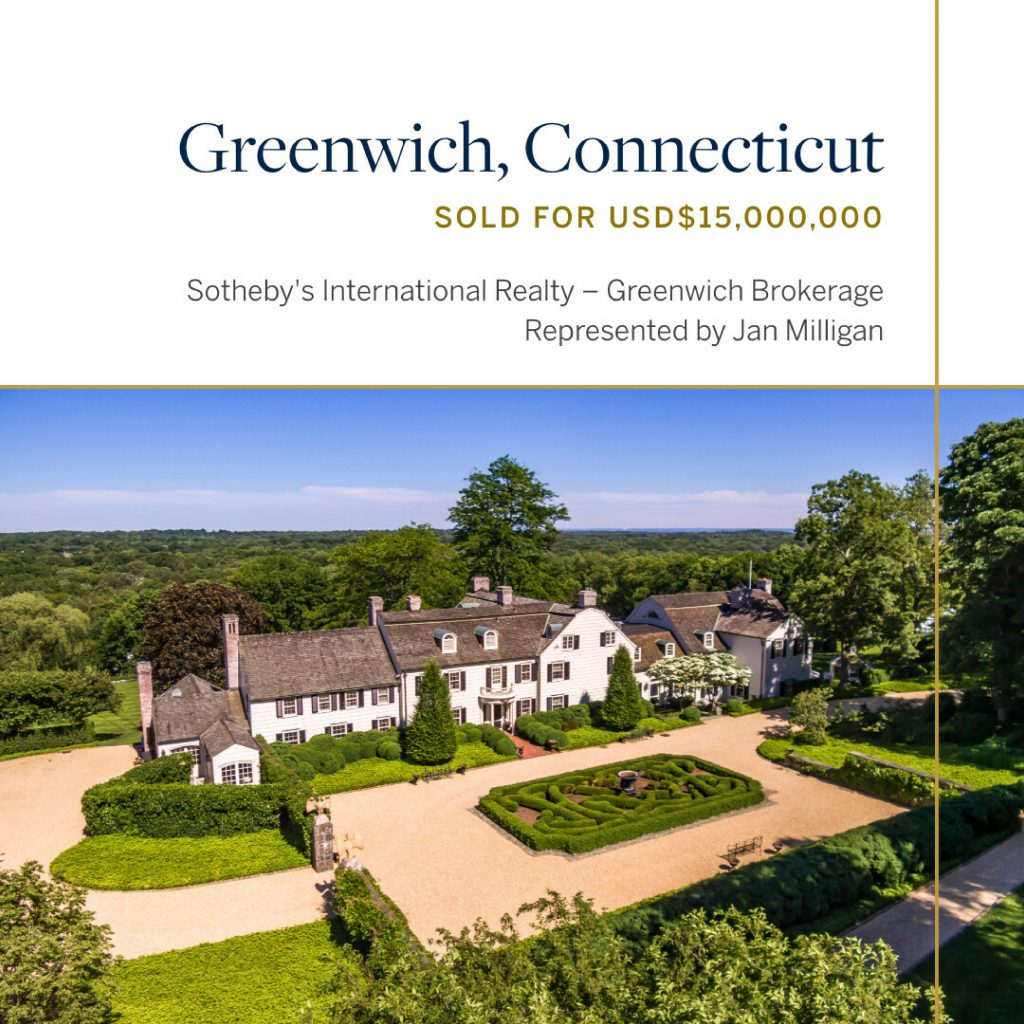
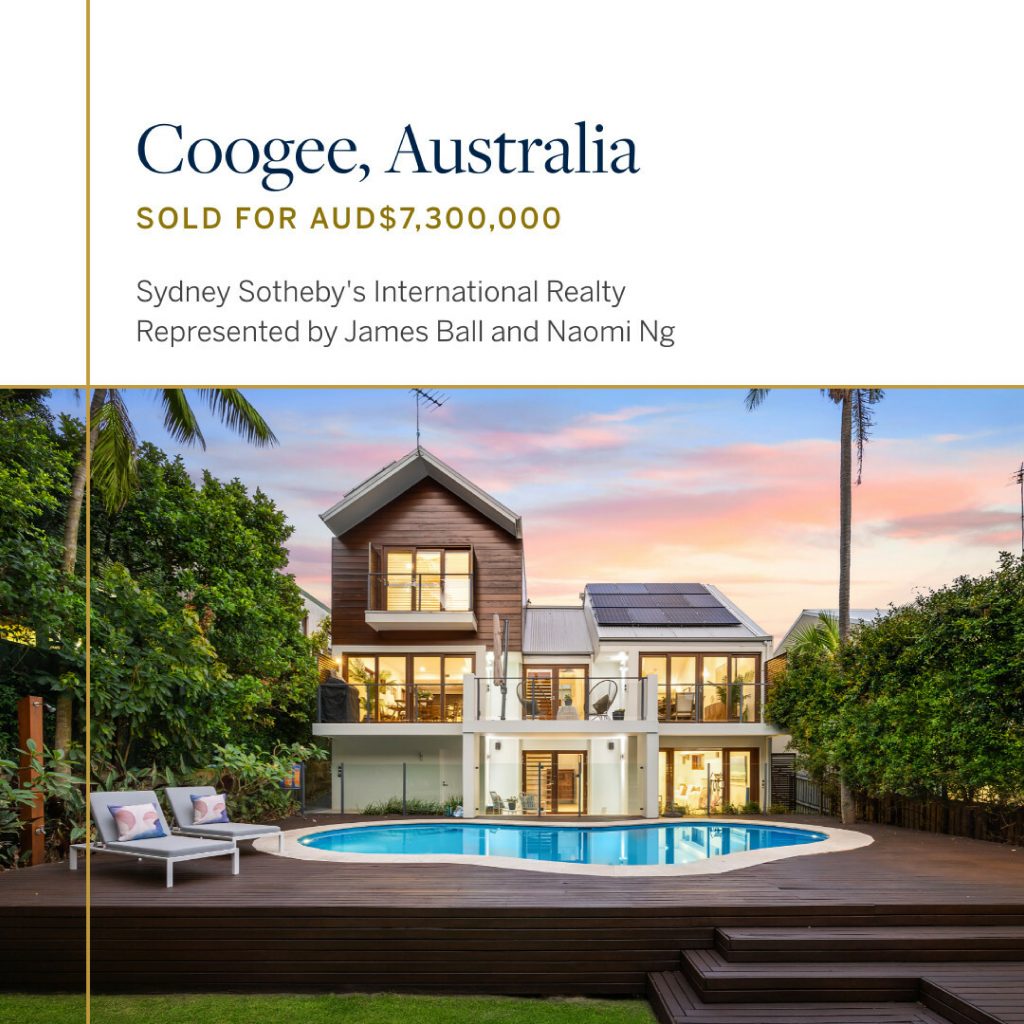
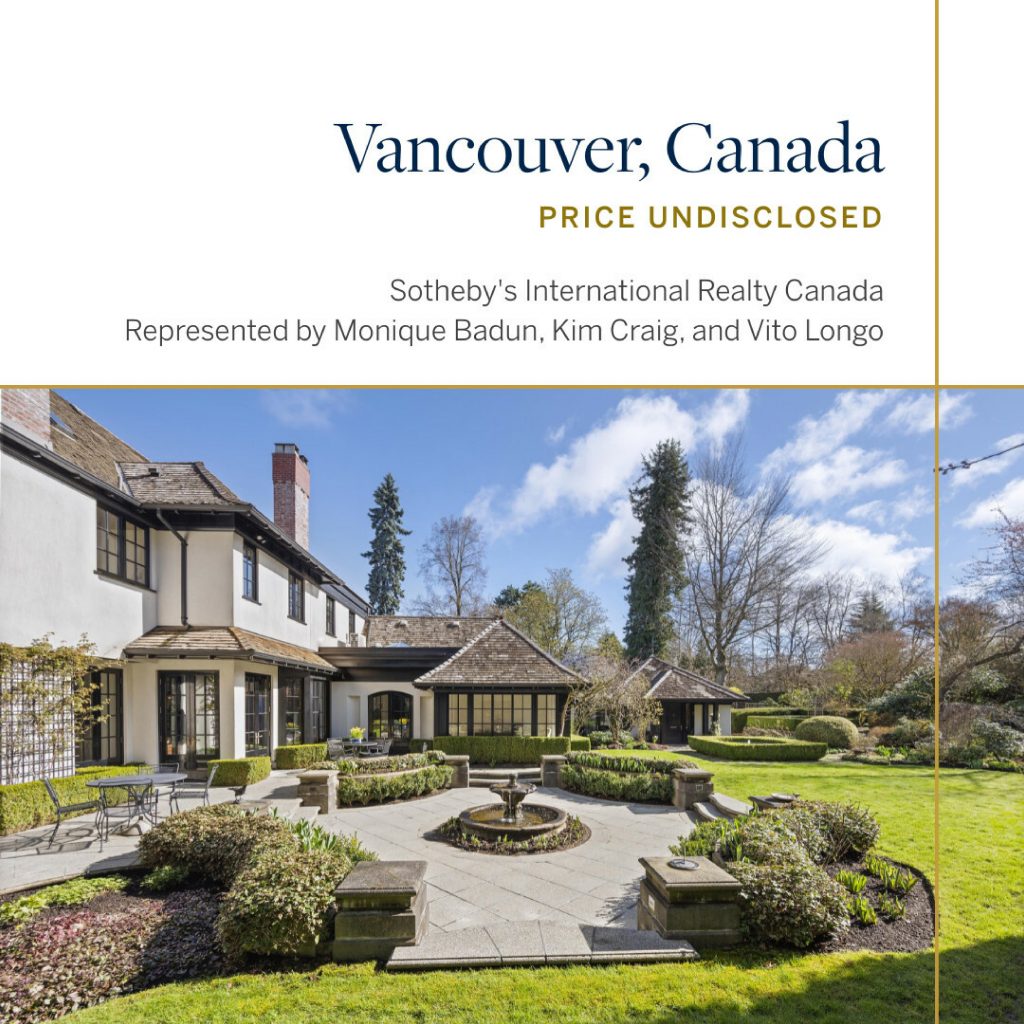
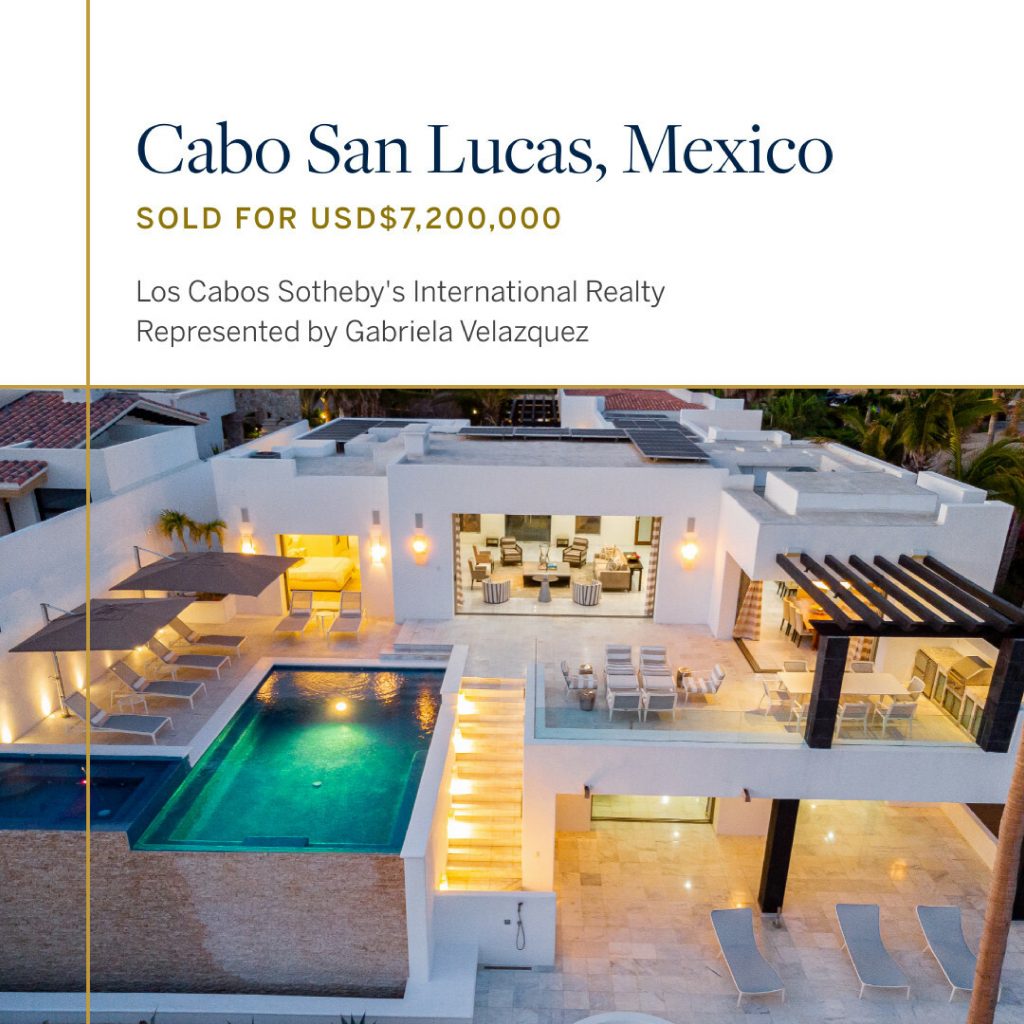
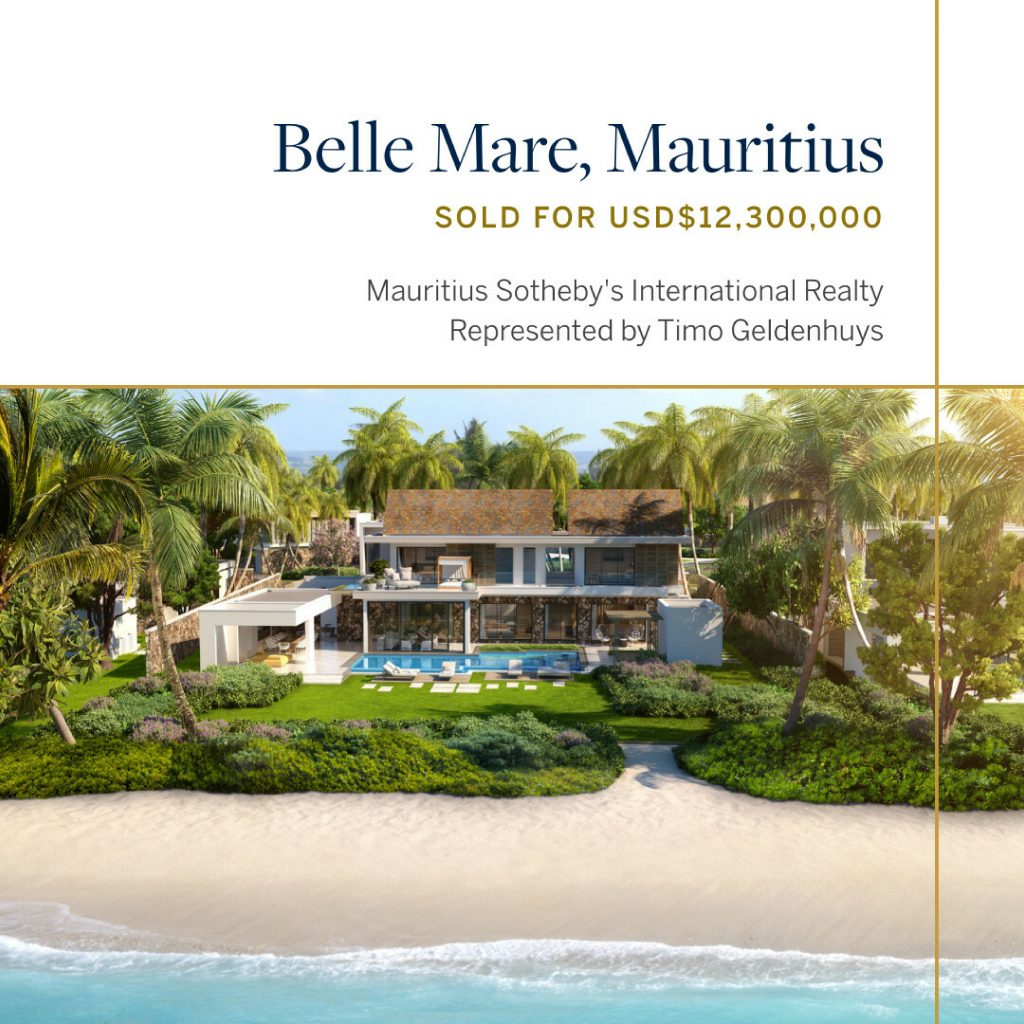
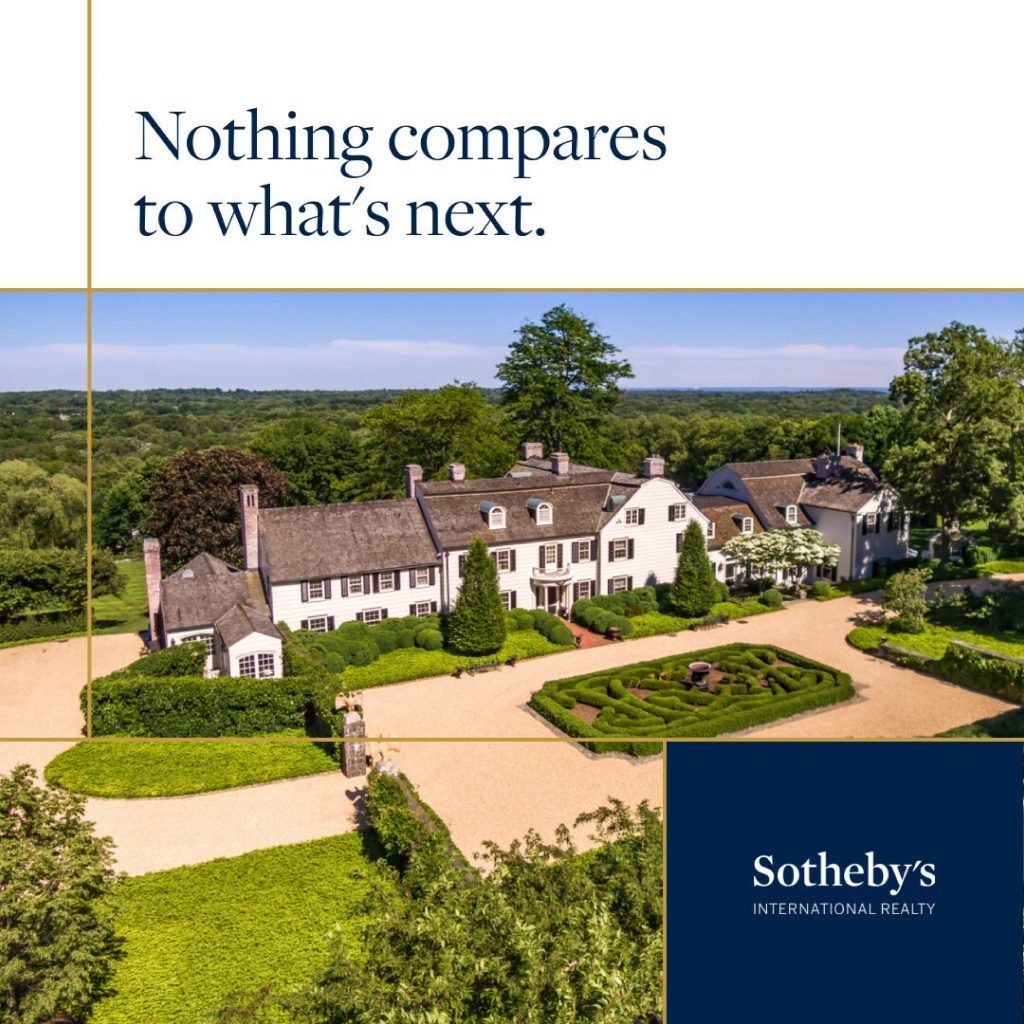
ENTERPRISING COLLECTORS ARE CREATING LUXURIOUS LOCATIONS WHERE LOVERS OF ART, ARCHITECTURE, WINE, AND FINE FOOD CAN EXPERIENCE THEM ALL, SAYS CHRISTINA MAKRIS
People who love art usually enjoy the other finer things in life, such as good food, wine, picturesque landscapes, and elegant architecture. Now it is increasingly possible to enjoy these pleasures all at once. Across the world, owners of historic buildings and vineyards are boosting their potential as tourism destinations by using them as a backdrop for their art collections. From wineries in Chile, Tuscany, and California, to castles in Ireland and Italy, a former monastery in Croatia and a coaching inn in Scotland, they have created immersive spaces where a range of cultural and culinary offerings meet in beautiful surroundings. Some provide luxury accommodation and spas, others are the perfect spot for a day trip. All eight are a feast for the senses.
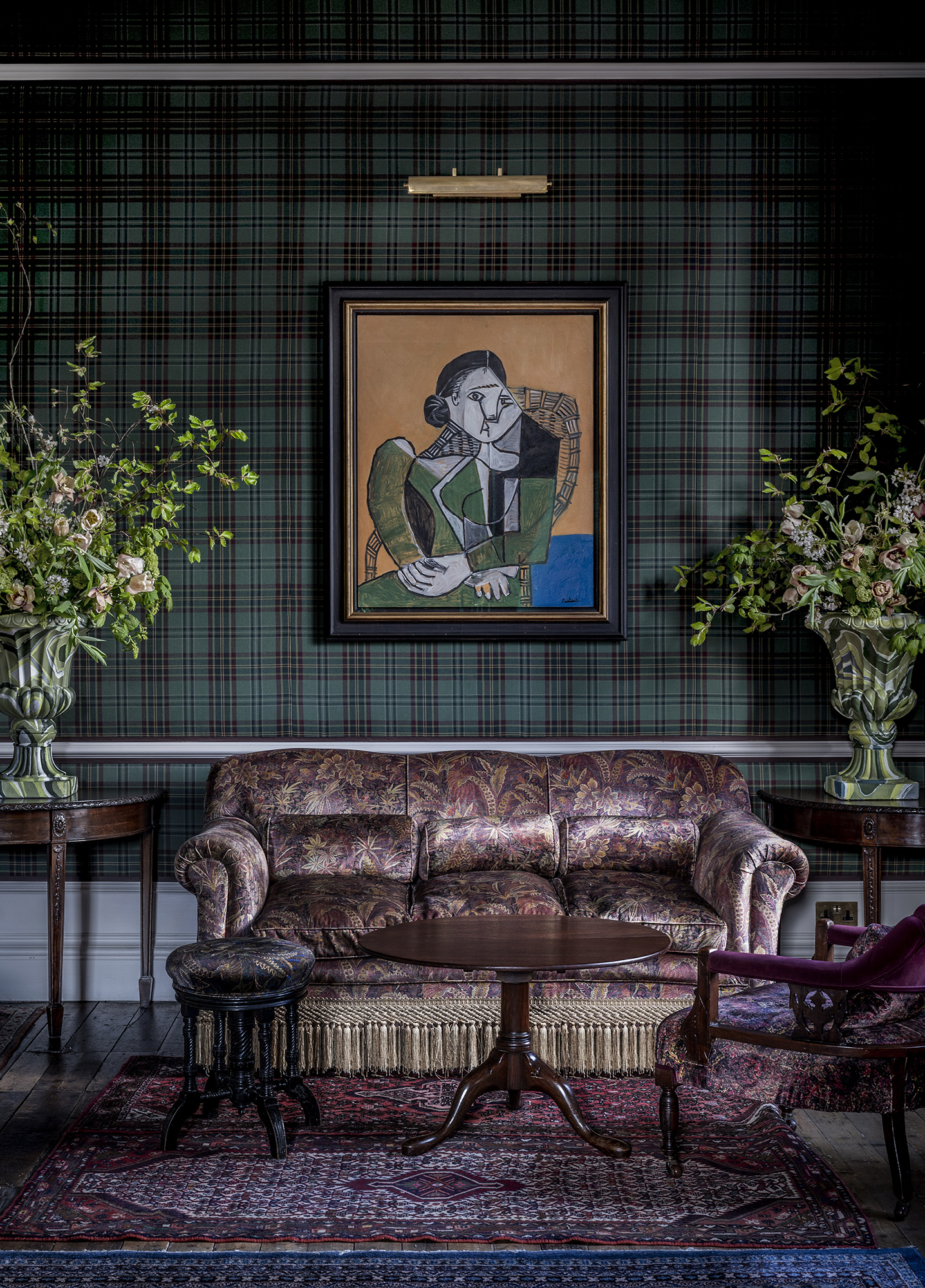
The Fife Arms’ Drawing Room with Pablo Picasso’s Femme assise dans un fauteuil (Woman seated in an armchair), 1953, on show
Hidden in the Scottish Highlands in Braemar, close to the Balmoral Estate—which was bought by Queen Victoria in 1852 and is beloved by the British royal family—the 46 sumptuously decorated bedrooms and suites of this 19th-century coaching inn are inspired by local places and famous visitors to the town. Among them were novelist, poet, and essayist Robert Louis Stevenson, who wrote parts of Treasure Island while on holiday in Braemar, and fashion designer Elsa Schiaparelli, who
is now commemorated in the art deco Elsa’s cocktail bar.
The Fife Arms belongs to the art dealers and philanthropists Iwan and Manuela Wirth, co-founders of the international gallery Hauser & Wirth. The hotel incorporates 14,000 antiques and artworks, ranging from the 16th century to modern masterpieces and contemporary commissions. There is a self-playing Steinway piano decorated by Mark Bradford, portraits by Picasso and Lucian Freud, photographs by Man Ray and Hans Bellmer, and a ceiling painted by Zhang Enli. The main restaurant is the Clunie Dining Room, which features a mural by the Argentinian artist Guillermo Kuitca that was inspired by the local landscape. thefifearms.com
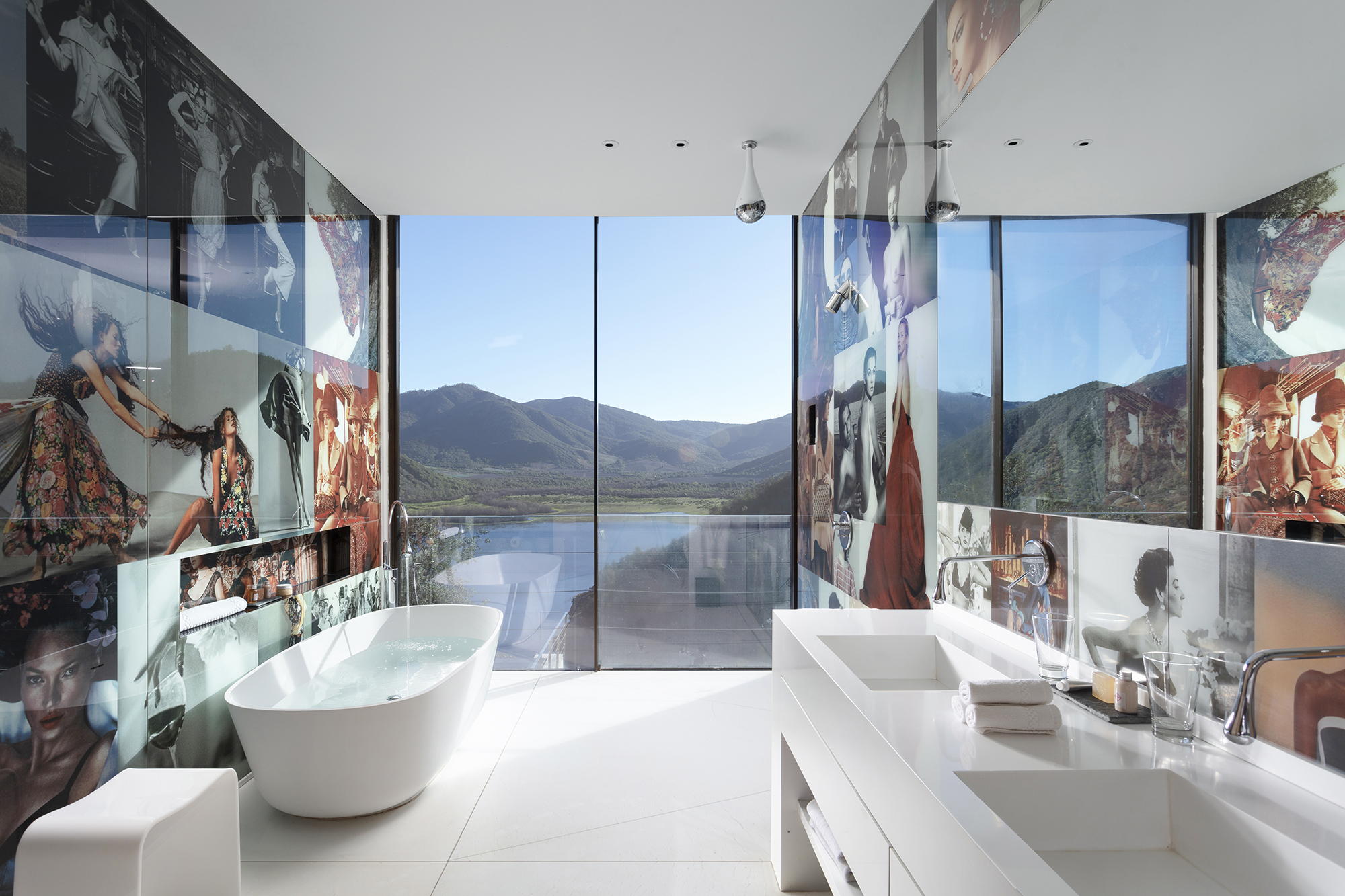
The Viña Vik winery, Chile
Norwegian financier, investor and art collector Alexander Vik and his wife Carrie founded their 11,000-acre Chilean winery, Viña Vik, in central Chile in 2004. Guests can enjoy award-winning wines while dining on a seasonal organic menu devised by executive chef Rodrigo Acuña Bravo.
A visit to the vineyard and adjacent hotel, Vik Chile, involves an extensive encounter with art. The 22 rooms and seven glass-walled bungalows were each designed in collaboration with architect Marcelo Daglio, enabling guests to stay in an immersive artwork while enjoying 360-degree panoramic views of the spectacular landscape. The futuristic winery building was designed by the Chilean-Croatian architect Smiljan Radic, who designed the 2014 Serpentine Pavilion in London, and the couple’s art collection is spread throughout the building. Works include paintings by Roberto Matta, a light work by James Turrell, and a diptych by Anselm Kiefer.
There are three other Vik hotels on the Atlantic coast of Uruguay, in José Ignacio near Punta del Este: Estancia Vik, Playa Vik, and Bahia Vik. vikwine.com
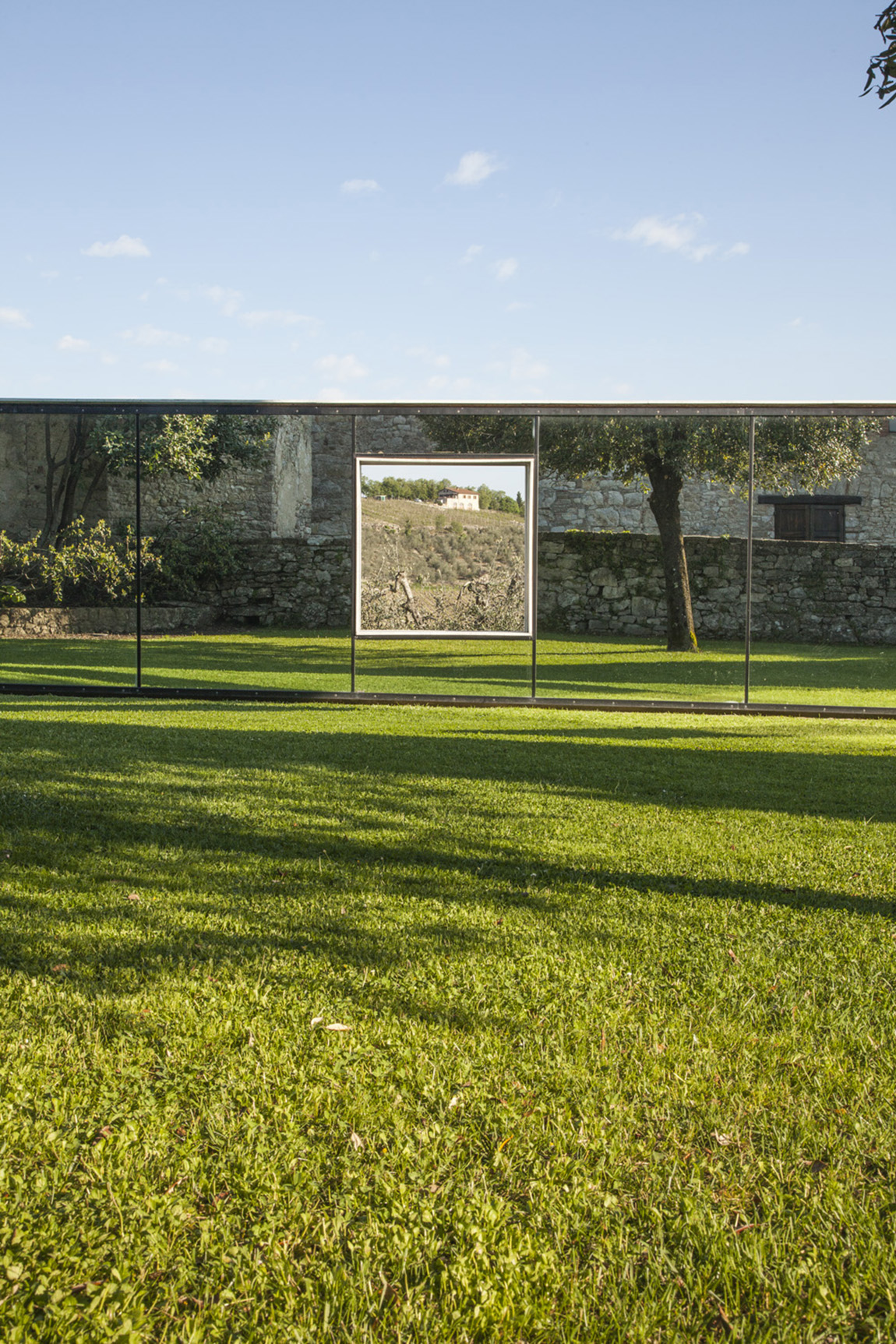
Daniel Buren’s installation Sulle Vigne: punti di vista, 2001, on the grounds of Castello di Ama
A visit to the Castello di Ama vineyard, between Siena and Florence in the Chianti region of Italy, is a sensory feast. Since 1999, the estate’s proprietors, Lorenza Sebasti and Marco Pallanti, have commissioned sculptures and installations as an offering of thanks to the land and its spirit, which also infuses the philosophy of their wine-making. Artists who have made works include Michelangelo Pistoletto, Daniel Buren, Giulio Paolini, Anish Kapoor, Carlos Garaicoa, Cristina Iglesias, Louise Bourgeois, Pascale Marthine Tayou, Chen Zhen, Hiroshi Sugimoto, Lee Ufan, and Roni Horn.
The latest work to be unveiled is a garden installation by Jenny Holzer, which features heavily scented helichrysum flowers and excerpts of poetry by Patrizia Cavalli and WS Merwin.
There are five bedrooms in the 18th-century manor house, allowing guests to stay and experience the sculptures at different times of the day in different light. The main restaurant is headed by the family’s personal chef. castellodiama.com
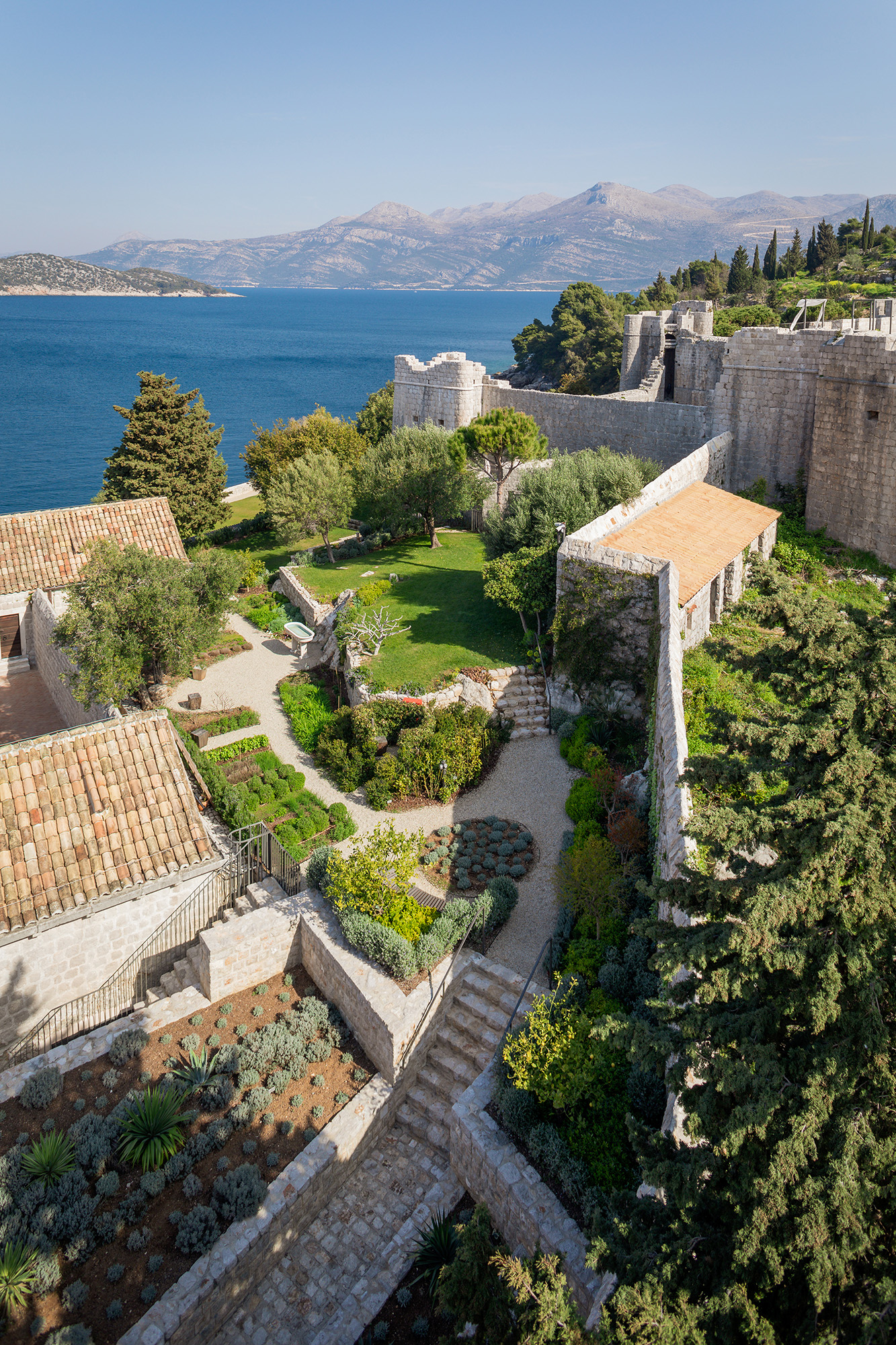
Lopud 1483
The history of this former Franciscan monastery on the small island of Lopud, just off the coast of Dubrovnik, is a little hazy. It was built in 1483, but many of its records were lost in the massive earthquake that hit the area in 1667, which largely destroyed the city. The monastery fell into disuse, and while there was still a functioning church on the site in the 1990s, the surrounding buildings were becoming increasingly dilapidated, a situation highlighted by the World Monuments Fund in 1996.
The following year, the collector and philanthropist Francesca Thyssen-Bornemisza began what would become a 20-year project to restore the monastery buildings. The 13 monks’ cells have been sympathetically transformed into five suites that fuse ancient and modern. Traditional plaster walls and woodwork are combined with handmade furniture by the Italian designer Paola Lenti and carefully curated works from Thyssen-Bornemisza’s extensive TBA21 contemporary art collection.
Lopud 1483 offers a variety of locations that can be tailored to every taste, from
private gatherings to high-profile events, as well as seminars, performances, and concerts. lopud1483.com
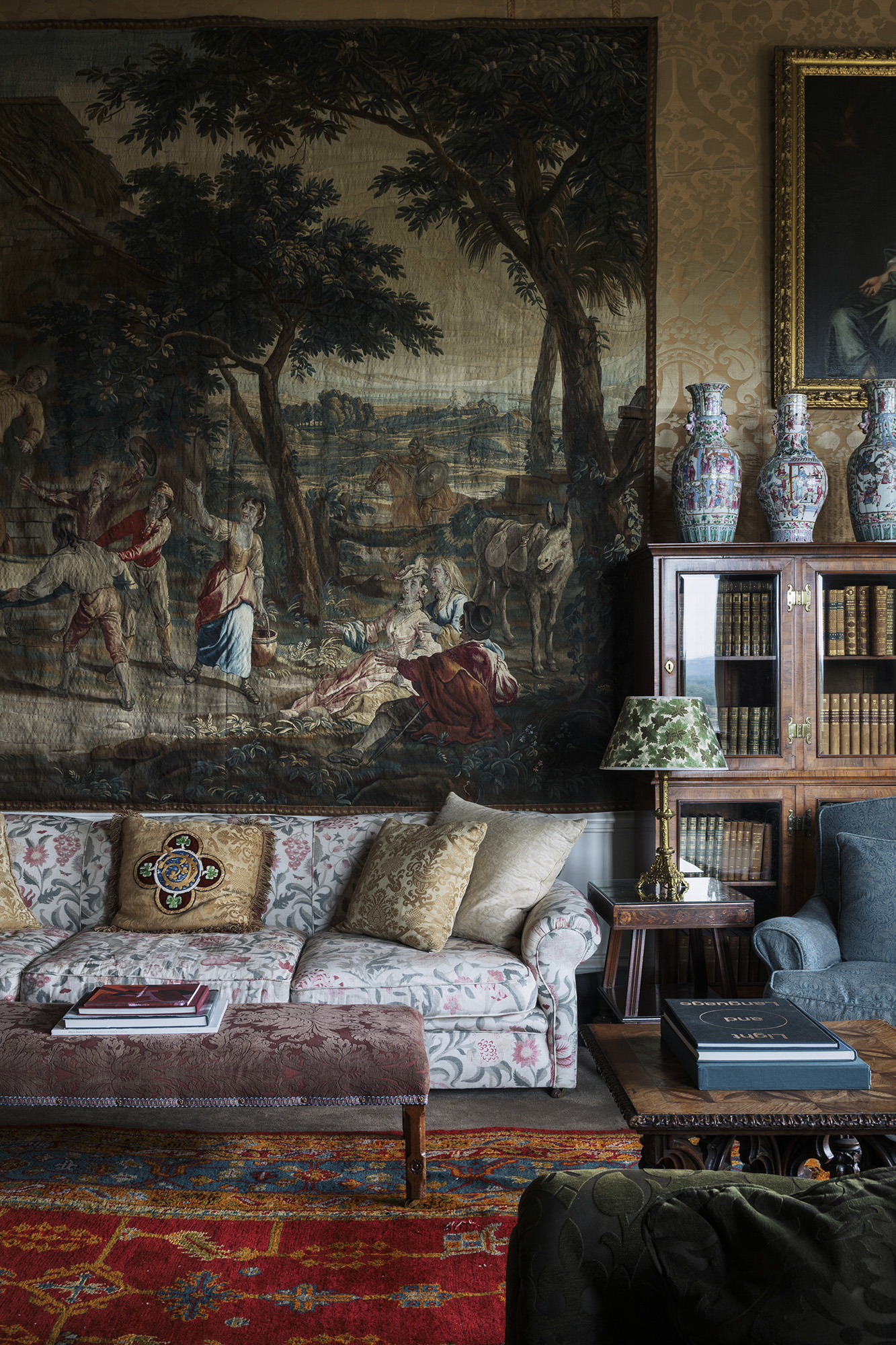
The Drawing Room at Lismore Castle
The Anglo-Norman Castle was built in County Waterford in 1185, on the site of a seventh-century monastery within sight of the imposing Knockmealdown Mountains. In the late-16th century the statesman and adventurer Sir Walter Raleigh bought the castle, but had to sell it after he was imprisoned for high treason in 1602. It later became the Irish home of the dukes of Devonshire, who acquired it in the mid-18th century. William Cavendish, the sixth duke, commissioned the Gothic revival architect Augustus Pugin to add a medieval hall, and asked Sir Joseph Paxton, the designer of the Crystal Palace for the Great Exhibition of 1851 in London, to create the lower garden.
The castle is still owned by the family, and their 15-bedroom residential wing is available for hire, but only in its entirety, rather than as individual rooms. The castle is an ideal venue for a celebration as it can accommodate up to 27 guests. One wing has been converted to house Lismore Castle Arts, which promotes contemporary Irish art and stages temporary exhibitions.
The seven-acre gardens, which are open to the public between March and October,
are divided into upper and lower areas. The upper garden dates from the early 17th century and is considered by many to be the oldest cultivated garden in Ireland. The flower borders and lawns coexist with sculptures by Antony Gormley, Franz West, Bridget McCrum, and Eilis O’Connell. The lower garden has an impressive collection of plants that love its acidic soil, including magnolia and camellias. lismorecastlegardens.com; lismorecastlearts.ie; thehallandlismorecastle.com
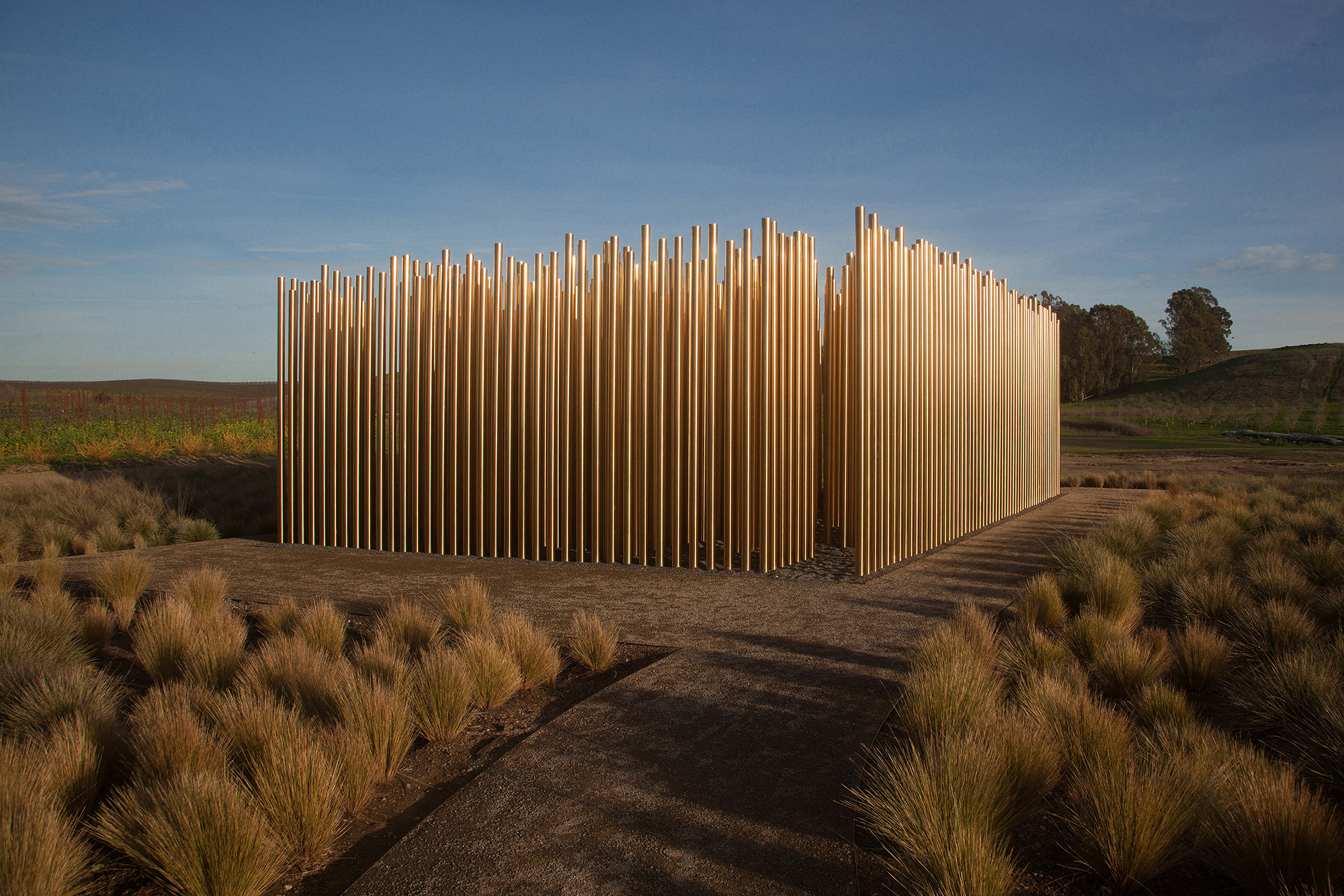
Gao Weigang, Maze, 2017, Donum Estate
Founded in 2001, the Donum Estate in Sonoma, northern California, is a leader in single-vineyard pinot noir and chardonnay wines. Spread over 200 acres of hillside, it also includes groves of olive and eucalyptus trees and lavender fields.
The estate was acquired by the Danish entrepreneur and businessman Allan Warburg and his wife Mei in 2010, and the collectors have spent the past 13 years transforming the landscape with sculptures from their personal collection. Their taste is broad: artists whose work they have acquired include Ai Weiwei, Lynda Benglis, Anselm Kiefer, Louise Bourgeois, Gao Weigang, Ugo Rondinone, Zhan Wang, Keith Haring, Jaume Plensa, Elmgreen & Dragset, Fernando Botero, Richard Hudson, and Yue Minjun.
Warburg first went to China as student, and by the 1990s had set up a joint venture there with the Danish fashion company Bestseller, importing and selling western fashion into a fast-growing emerging market. Bestseller Fashion Group now has about 7,000 stores in the Far East. Warburg now resides in Hong Kong with his wife Mei. There isn’t a hotel at the Donum Estate as yet, but there are daily tours for visitors to taste the wines in a specially commissioned pavilion designed by the artist Olafur Eliasson and the architect Sebastian Behmann. thedonumestate.com
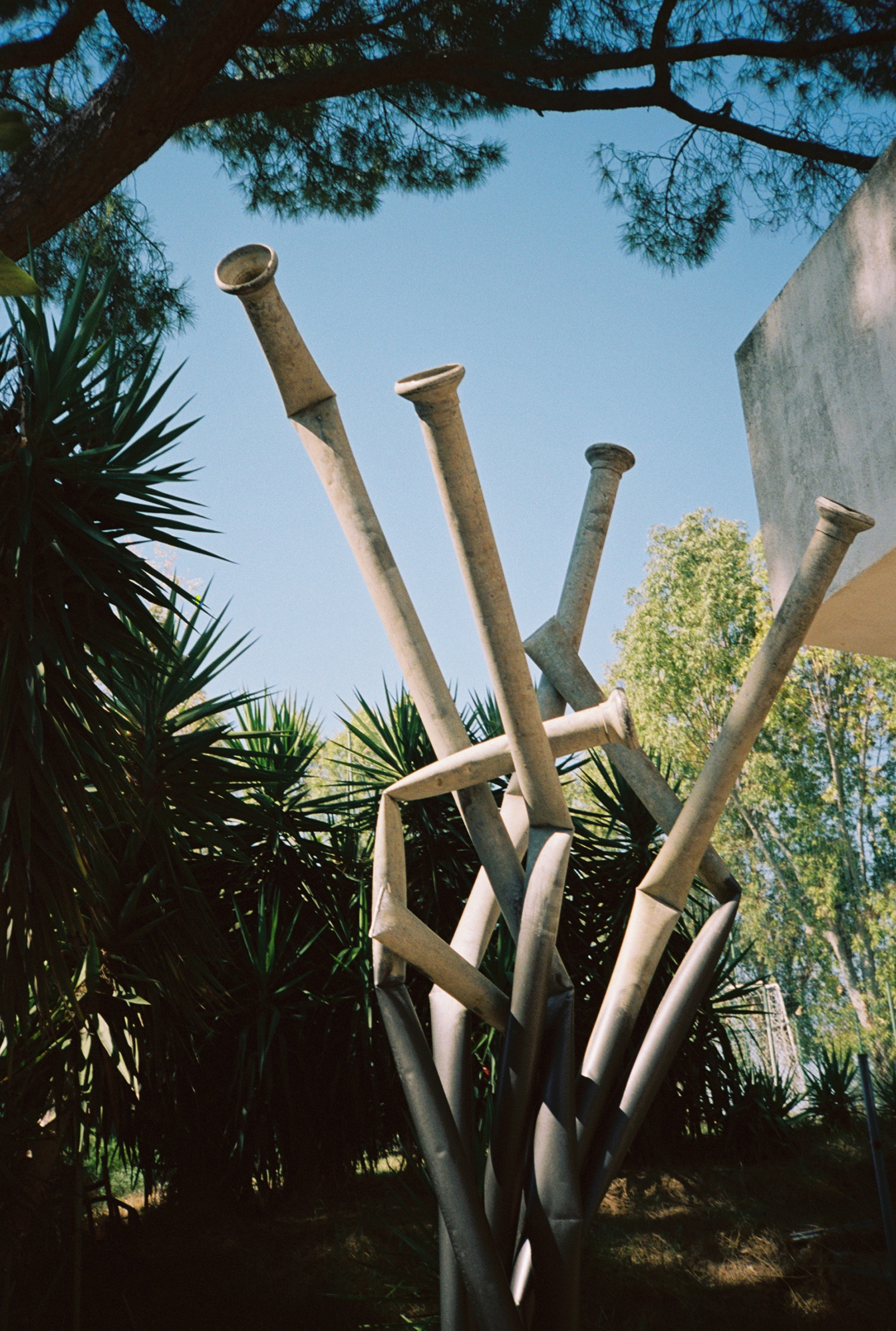
Michele Mathison, Everything and Nothing, 2019, San Basilio, Basilicata
This fortress, near Matera in the southern Italian region of Basilicata, was built to protect a monastic community in the seventh century. It is now owned by the Berlingieri family, who have housed their art collection throughout the property for the past five decades. In 2019 the young collector Aloisia Leopardi was invited to start a program dedicated to artistic research, experimentation, and collaboration. The castle is now a project space for cultural exchange between artists, curators, collectors, and arts professionals, which aims to encourage the local communities in the surrounding villages to experience contemporary art.
Visiting the artists in residence and exhibitions is by appointment only; it is also possible to book a suite or room at the nearby agriturismo, Il Filaro del Castello del Castello San Basilio. Basilio alumni include the emerging artists Oren Pinhassi, Lucy Henshall, Michele Mathison, and Sheida Soleimani. The artists for 2023 are Kat Lyons and Anna Perach. castellosanbasilio.com
Photos: Andrea Bosio; Sim Cannetty-Clark; Alessandro Moggi; Lucy Henshall; Robert Berg; courtesy of @vik_wine and @vikchile, The Fife Arms, Lismore Castle and Lopud 1483
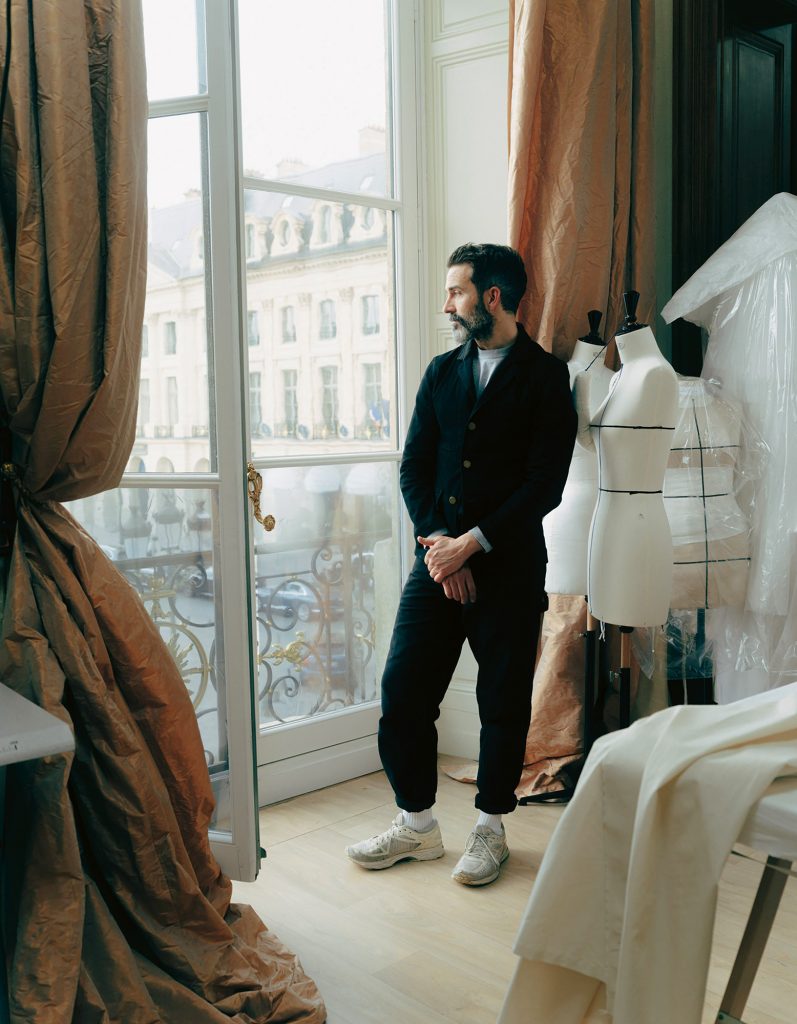
Daniel Roseberry at Maison Schiaparelli, overlooking the Place Vendôme
Daniel Roseberry, the artistic director of Schiaparelli, has long been fascinated by Elsa Schiaparelli’s collaborations with the leading lights of Surrealism. After establishing her venerable fashion house in the 1930s, Schiaparelli became one of the first couturiers to collaborate with artists, working with Salvador Dalí and Man Ray, among others.
“I’m always so nostalgic for that period,” Roseberry says. “I think of those collaborations as ones that were happening between people who were creating culture around them, and who found themselves in real relationships. I often wonder if they had any idea that their work would be romanticized and fetishized for generations after. Even if it was transactional in some way, those creative partnerships feel so deeply natural compared to most of what we observe today.”
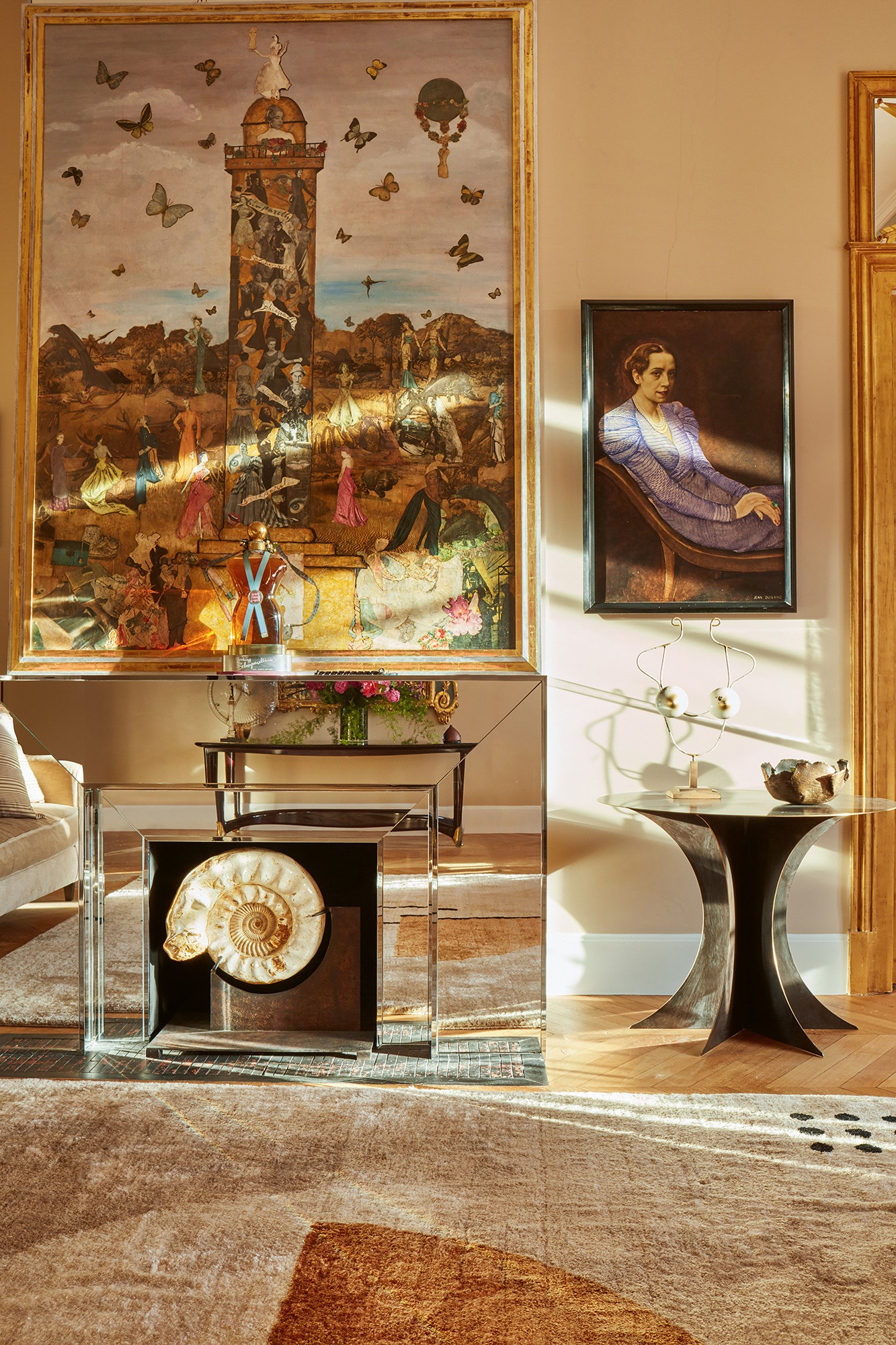
Marcel Vertès, Schiaparelli, 21 Place Vendôme, 1953, on display in the salon of Maison Schiaparelli
Photo Credit: Christophe Coënon; Matthieu Salavaing; © Archives Snark; ullstein bild/ullstein bild via Getty Images; courtesy of Schiaparelli; courtesy of the Philadelphia Museum of Arts.
Texas-born Roseberry has been reinterpreting Schiaparelli’s historic vision through his dramatic collections since taking the reins of the house in 2019. This March, the Surrealism and Its Legacy sale at Sotheby’s Paris brings together works by artists associated with the movement, including René Magritte, Francis Picabia, Salvador Dalí and Max Ernst, and works from those influenced by it—such as Lucio Fontana and Alexander Calder.
The sale reflects a period of renewed interest in Surrealism, with recent auctions and international exhibitions including last year’s Venice Biennale adopting it as a central theme. For Roseberry, the enduring appeal of the Surrealists is obvious. “Generations and times shift and change, but the urges of the subconscious feel timeless and truly inescapable. They were able to tap into this and exploit it,” he says.
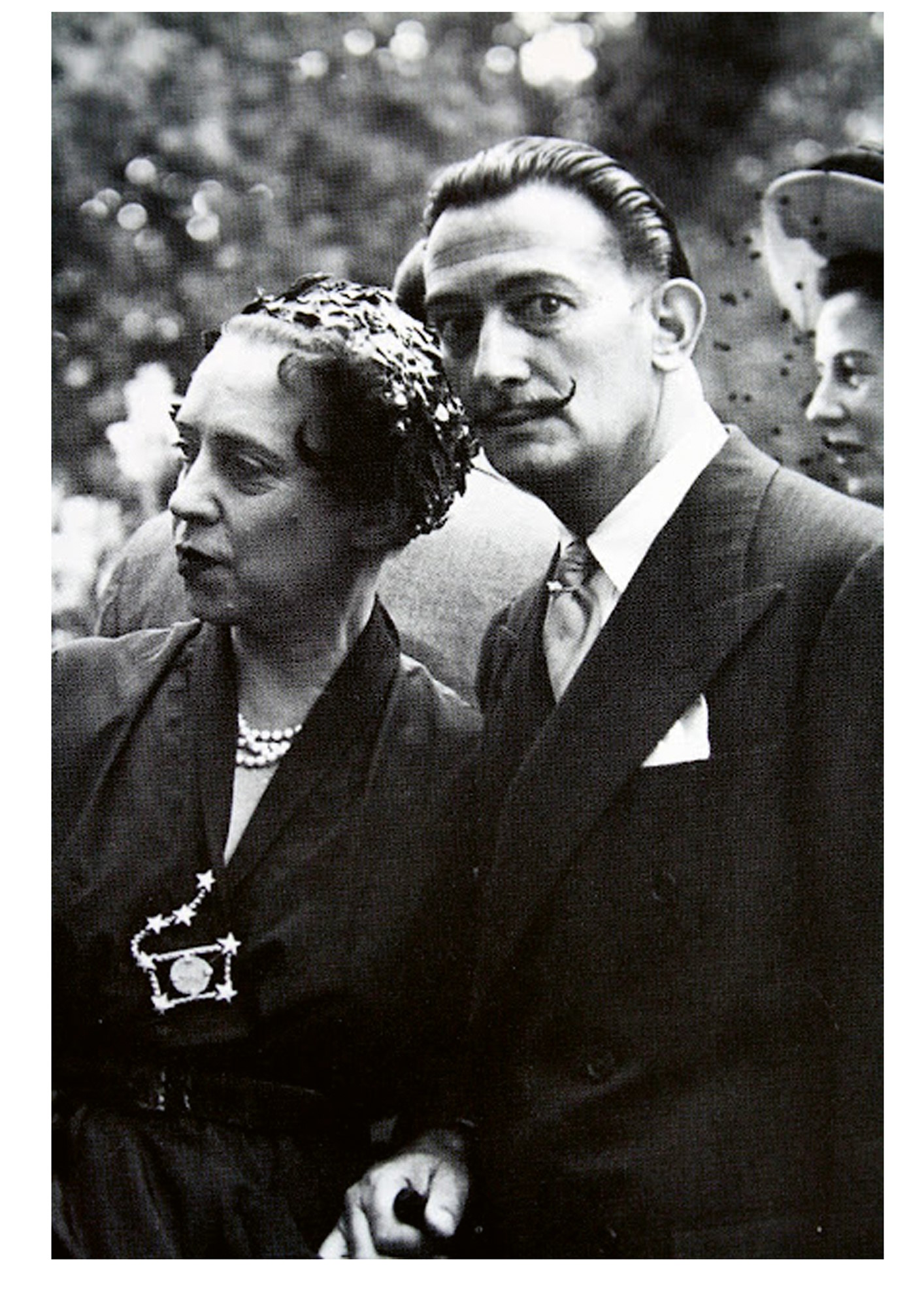
Elsa Schiaparelli with Salvador Dalí, 1949
Elsa Schiaparelli was born into a family of intellectuals and aristocrats in 1890 in Rome, and her encounter with the Surrealists was utterly fortuitous. Sailing on an ocean liner in 1916 to North America with her husband, she met Gabrièle Buffet-Picabia, first wife of the Dada artist Francis Picabia. Buffet-Picabia introduced her to New York’s avant-garde art scene via Société Anonyme, an arts organization founded in the city by the painter and collector Katherine Dreier, Marcel Duchamp and Man Ray. Returning to Paris in 1922, Schiaparelli made her foray into fashion, encouraged by a new acquaintance: preeminent designer Paul Poiret. Her first success was the now-renowned trompe-l’œil bow jumper, a design hand-knitted by Armenian women in Paris. Schiaparelli then went on to set up business in a garret on Rue de la Paix and, in 1935, moved to a boutique in the prestigious Place Vendôme. Her connections with artists became central to the brand’s success.
It is her work with Dalí that stands out most. “From my point of view, it is the most striking and influential [collaboration] in the history of the house of Schiaparelli,” says Marie-Sophie Carron de La Carrière, head curator of the fashion and textile collections after 1800 at the Musée des Arts Décoratifs in Paris, which hosted the exhibition Shocking! Les mondes surréalistes d’Elsa Schiaparelli (July 2022–January 2023). Among other pieces, Schiaparelli and Dalí worked together on the Shoe Hat, 1937–38, absurdly fashioned from an upside-down black shoe, and the Lobster dress, 1937, for which Dalí designed a crustacean to appear on a white organdy dress, which was interpreted into a fabric print by silk designer Sache.
After returning to Paris from the US after the Second World War, Schiaparelli commissioned the Catalan artist to design the crystal bottle for her new fragrance, Le Roy Soleil, in homage to the “Sun King”, Louis XIV. The resulting bottle comprised a golden sun painted with swallows above a gold and blue sea.
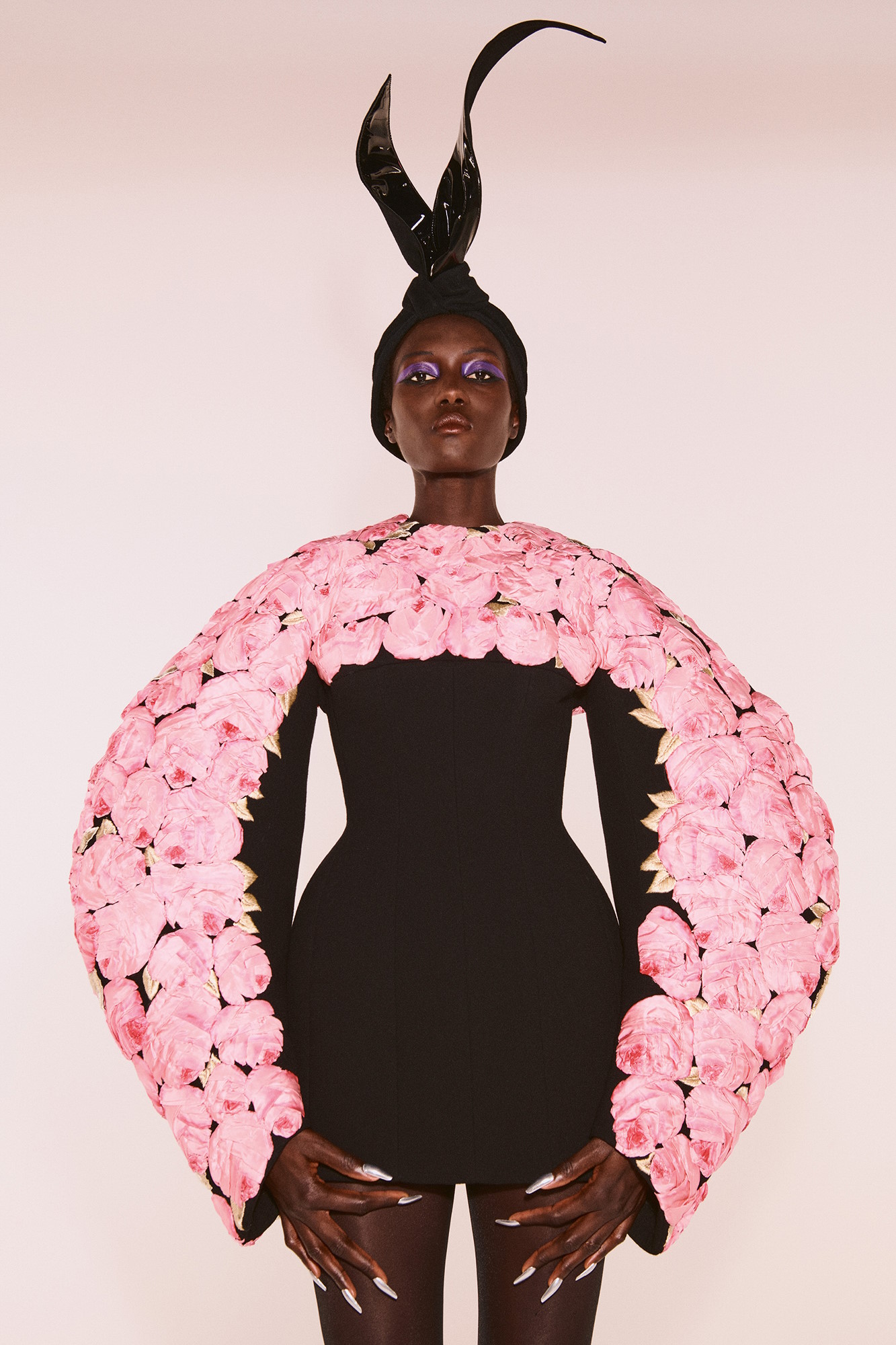
Schiaparelli’s Shoe Hat, 1937–38;
Other memorable creations include two pairs of spiral spectacles that Man Ray made for Schiaparelli in 1936. Jean Cocteau, the Surrealism polymath, brought his passion for optical illusion and metamorphosis to Schiaparelli’s collections in 1937 and 1938. Designs include a linen evening jacket featuring a woman in profile, her hair rendered in gold thread, shimmering down the right arm with two hands encircling the waist. On a silk jersey coat, Cocteau designed two facing profiles to form the shape of a vase, filled with a bouquet of pink taffeta flowers. Surrealist artist Leonor Fini designed the bottle for Schiaparelli’s fragrance Shocking, inspired by the hourglass torso of Hollywood film star Mae West, one of Schiaparelli’s clients. Artist Meret Oppenheim traded Schiaparelli a design for a piece of jewelry: a brass bracelet covered in animal fur that Schiaparelli included in her Fall/Winter 1936 collection.
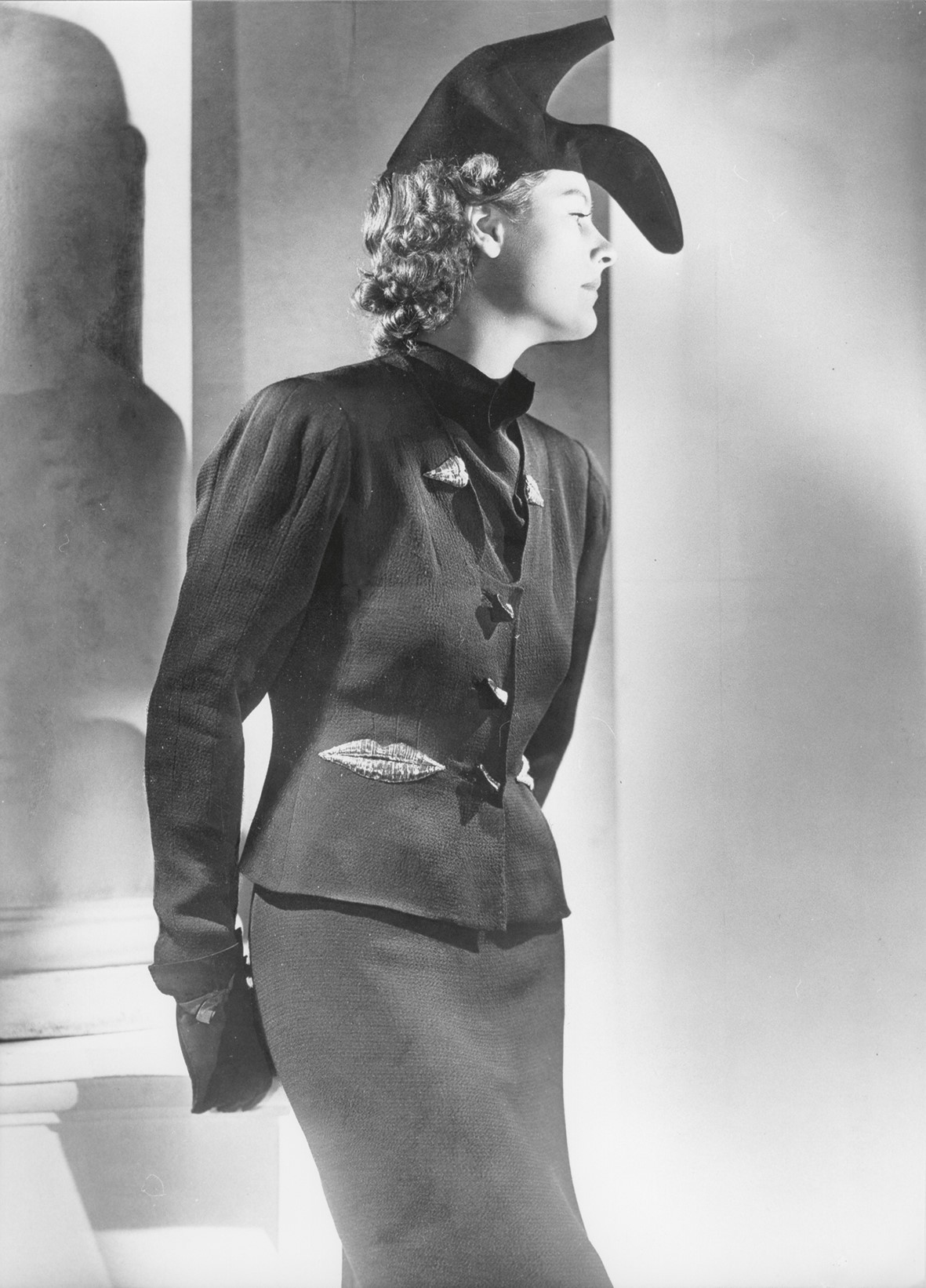
A nod to Jean Cocteau’s evening dress for Fall 2021 Couture
Schiaparelli held these collaborations close to her heart. “Working with artists like Bébé Bérard, Jean Cocteau, Salvador Dalí, Vertès, Van Dongen; and with photographers like Hoyningen-Huene, Horst, Cecil Beaton and Man Ray gave one a sense of exhilaration,” she wrote in her autobiography, Shocking Life. “One felt supported and understood beyond the crude and boring reality of merely making a dress to sell.” They helped her to become one of the most important designers of the 20th century, rivaling contemporaries such as Coco Chanel.
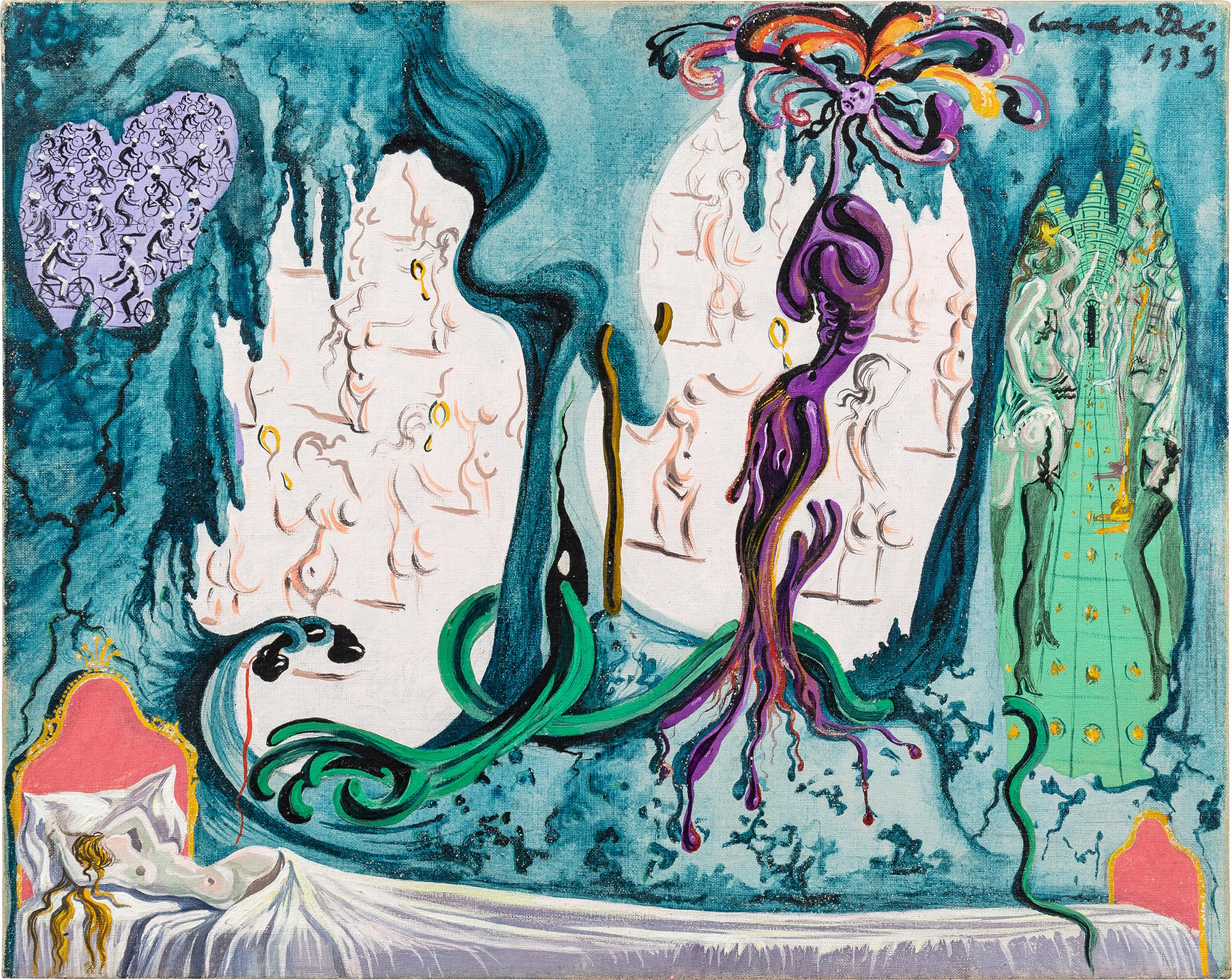
Salvador Dalí, Dream of Venus, 1939
Today, the Surrealists’ influence is carried forward by Roseberry through his own designs for the house, which closed in 1954 and was relaunched in 2012 by Diego Della Valle, the founder of Italian luxury group Tod’s. Roseberry had not worked in a couture atelier before, joining from upmarket fashion brand Thom Browne, but his eye for tailoring and experimentation has made him a perfect fit, and he has resurrected iconic Schiaparelli motifs in bold new ways. Pink silk roses, a nod to Cocteau’s evening dress, cover the billowing arms of a black mini dress from his Fall 2021 Couture collection. For Spring 2022 Couture, he presented a “cage” dress exquisitely crafted from gold leaf and vintage gemstones, which resembles more of a giant brooch than a garment.
To keep the founder’s intentions alive in a new century, Roseberry has “learned to stay loose”. “When you look at Elsa’s process, it feels free and unburdened, and spontaneous,” he says. “It’s like the shower principle: that the best ideas come to you when you’re not thinking about them, or when you’re in the shower. I think her work has this free-wheeling intelligence that feels so ahead of its time. It wasn’t just about beauty, or of the ‘line’ of a dress. It was about a concept, an idea, a notion of reality. She would take this notion and bend it to her will.”
Roseberry’s love of Surrealism extends to his own art collection, too. He has “just bought a small painting by the Belgian surrealist Marcel Delmotte”, who drew from a range of sources, including the Italian Mannerists to contemporaries such as Giorgio de Chirico for his dreamlike works. “French Surrealism in the 1950s has something I love. I am repeatedly drawn to French and Italian art from the 1920s and the 1930s, such as Gaston Lachaise [known for his exaggerated bronze nudes], and I’d love to one day own an important piece of American art from the 1950s or 1960s, like a giant Helen Frankenthaler.”
Like Schiaparelli, Roseberry is eager to collaborate with artists of his time: “I love Katie Stout”—the artist and furniture designer who pushes the boundaries of functionality, and often references organic matter and female figures. “The photographer Nadia Lee Cohen, and my friends—the sculptor F Taylor Colantonio, and the writer and playwright Jeremy O Harris [his Slave Play made waves on Broadway in 2021],” he adds. “I would love to make a short film with Janicza Bravo [her work includes the movies Lemon and Zola]. Tilda Swinton would make an amazing Elsa Schiaparelli one day in a film, and I’d love to be involved in that.”
In the meantime, Roseberry’s eyes are firmly focused on his work with Schiaparelli and, just like the house’s imaginative founder, “creating things that people might remember, and that might last more than a moment”.
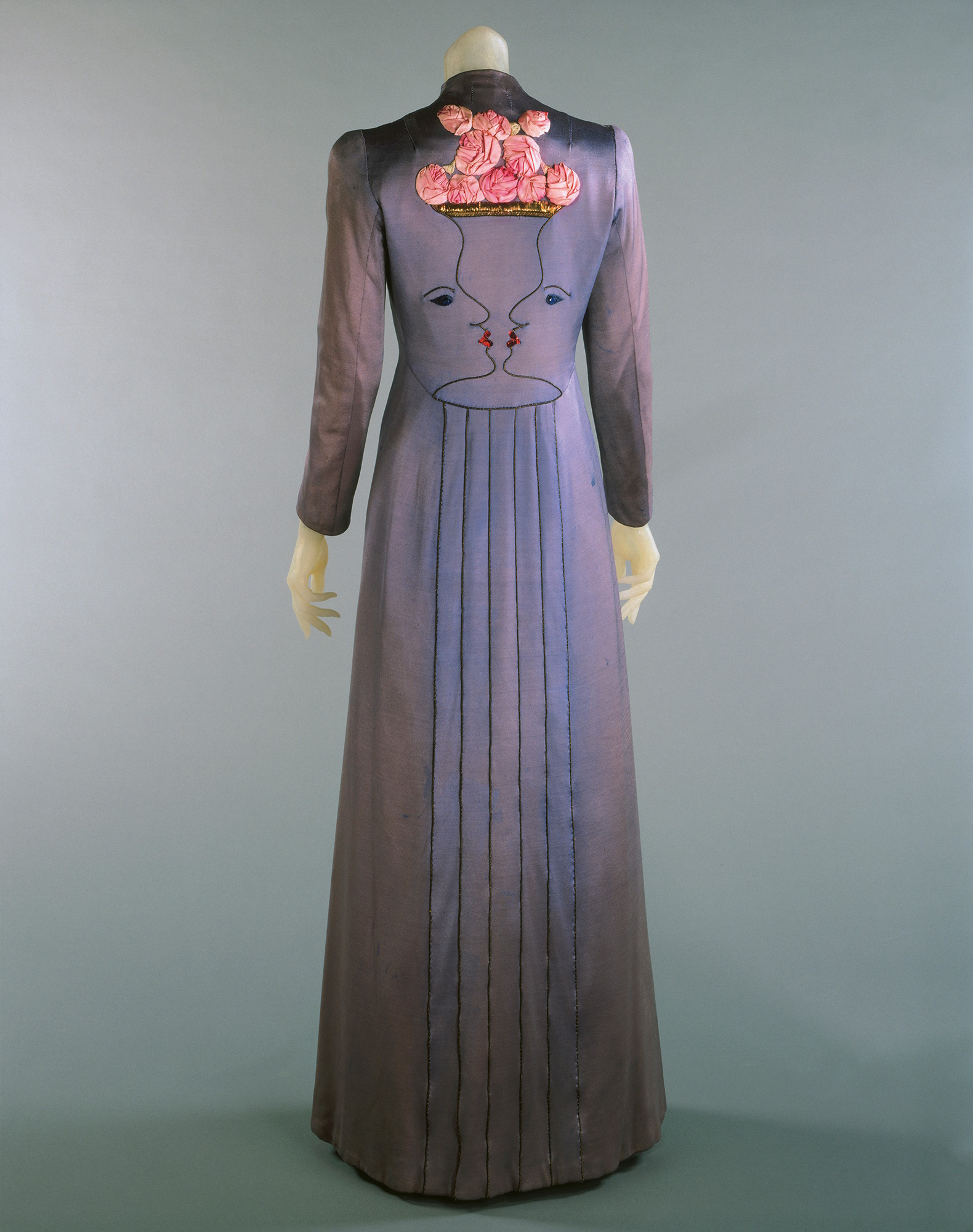
Schiaparelli coat designed in collaboration with Cocteau